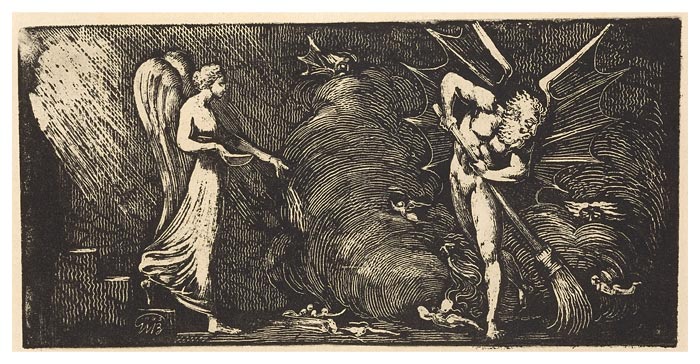
Blake probably created this metalcut during the first half of the 1820s. This second impression is printed on paper watermarked 1821. It illustrates a story from John Bunyan's Pilgrim's Progress. The man sweeping only stirs up dust, while the woman sprinkles water to settle it and sweeten the room. The Interpreter explains that the parlour represents the heart of man, whose original sin and corruption cannot be settled by the sweeper (the law) but rather can be by the soothing blessing of the woman (the Gospel).
The theme repeats one of Blake's major beliefs that "the Letter Killeth The Spirit giveth Life" (pl. 1 of Job). The Ancients frequently called Blake "the Interpreter."
I. Engravings
William Blake was tutored by his mother, given drawing lessons at the age of ten, and at fifteen apprenticed to James Basire, one of the most prominent engravers of the day. Seven years later, when the apprenticeship was complete, Blake was admitted to study at the Royal Academy. Because of this solid instruction, he was admired for his craftsmanship and often identified as "Mr. Blake, the engraver." Throughout his life, he maintained that engraving was a true art form: "Painting is Drawing on Canvas & Engraving is drawing on Copper & Nothing Else." Blake's prints demonstrate his strong commitment to line, developed through Basire and enhanced by his own creativity. Fortunately his engraver's training would support him, though not well, for the remainder of his life. At forty-six, he wrote, "I curse & bless Engraving alternately because it takes so much time & is so untractable, tho capable of such beauty & perfection."
